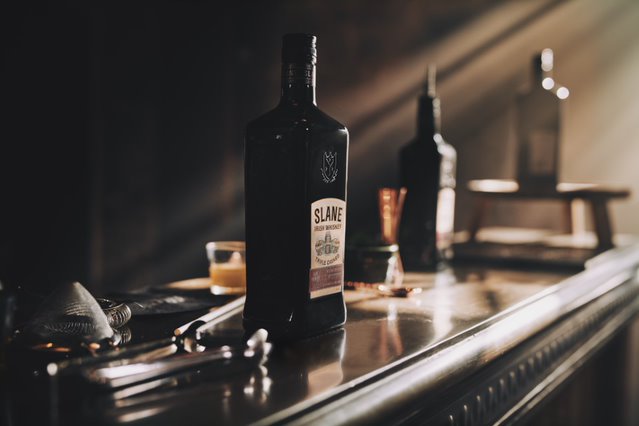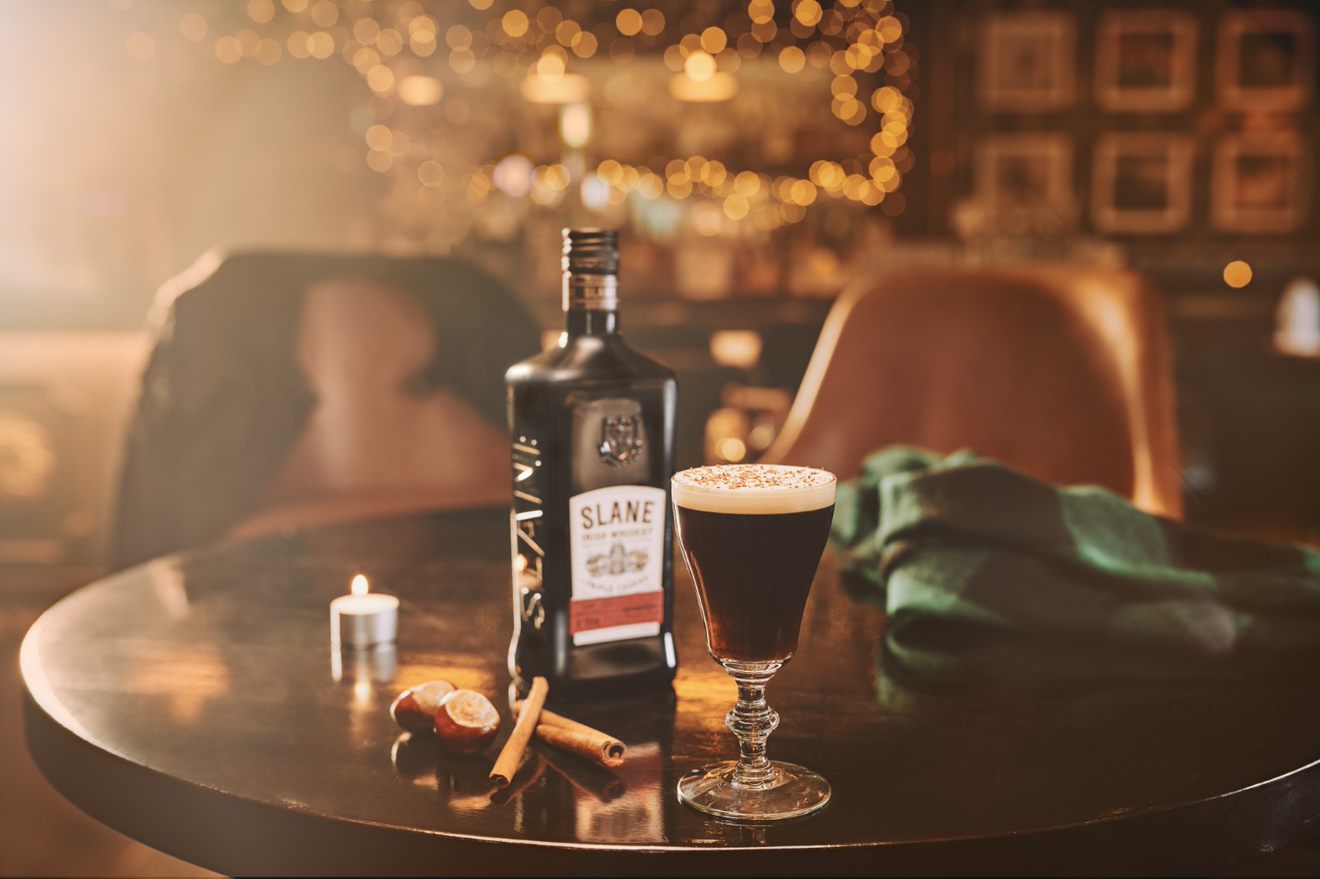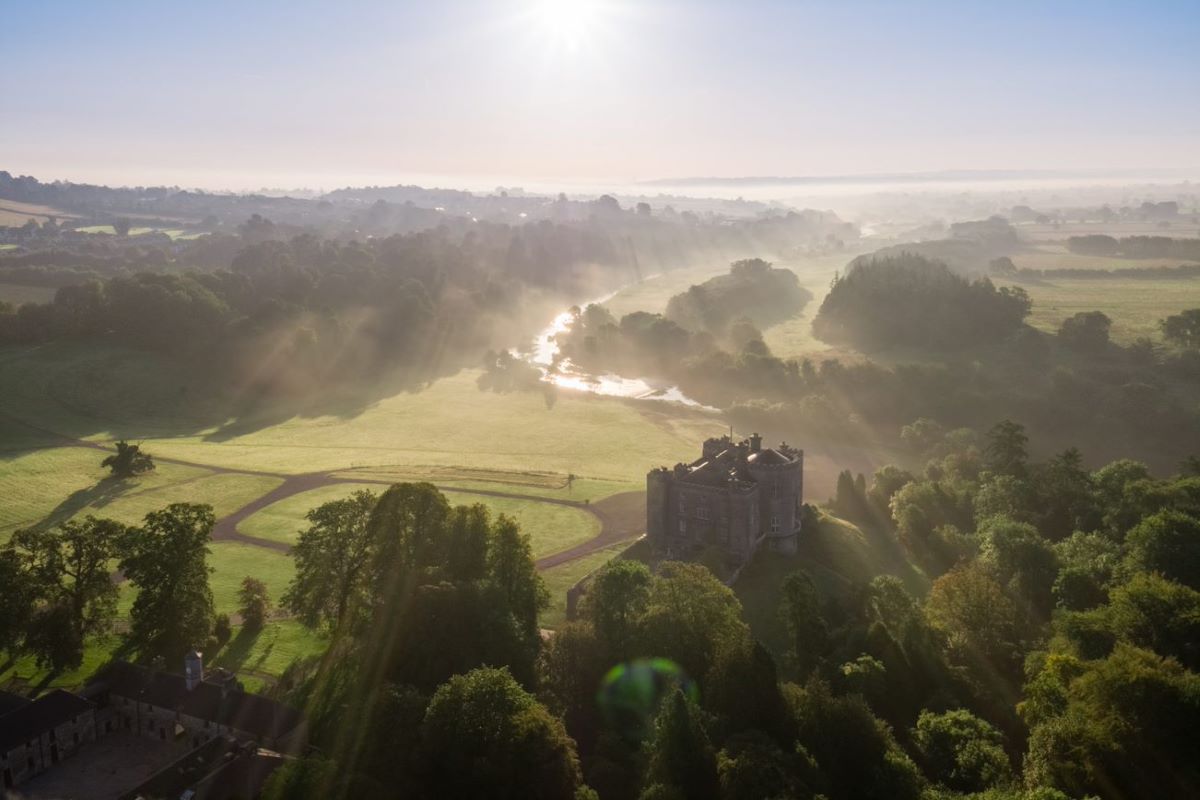“One of my earliest childhood memories was fetching Bono his orange juice every morning before he started recording in our dining room”
Slane, Ireland.
A medieval castle on a hill, surrounded by paddocks and overlooking the meandering river Boyne. At face value, it mightn’t seem any different to the hundreds upon thousands of grandiose antiquated buildings that scatter the fields of the UK and Ireland. But pulsing through the walls of this building is a truly unique energy – the energy of a building staunchly entrenched in music history.
And, as the enigmatic heir apparent to the castle (one Alex Conyngham) stood above me recently, zealously telling his origin story, wild hair bouncing around, a bottle of whiskey in one hand, green sunglasses in the other, I couldn’t help but feel that energy as though I, too, had grown up within those hallowed walls.

Alex Conyngham and his trusted companion. Slane Whiskey. Image provided
Long story short, in the late 1970’s the family (for whom Slane had been home for centuries) were facing financial trouble and the very real possibility of having to sell the estate, when a young Lord Henry Mount Charles (Alex’s father) had the idea to throw a music festival. Some rushed organisation (and interesting financing) later, Slane festival was born. The first iteration featured headliners Thin Lizzy and an up-and-coming Irish band called U2. Now forty years on, Slane has been headlined by practically anyone who has mattered in rock post-Beatles. Queen, Bowie, Springsteen, Dylan, Madonna, The Stones, The Chili Peppers, Oasis, Bon Jovi… the list is endless and truly astonishing. U2 recorded an album in the kitchen. Irish parliament passed legislation to keep the festival alive. Mick Jagger partied at the nightclub in the castle’s basement. Everything that could have happened in this castle has happened.
So, what was the next step? How does a place so rich in history, so steeped with stories and heritage, continue its legacy? To Alex, the answer was a simple one.
Whiskey.

Bottle of Slane Whiskey 2020. Image provided.
Slane is a triple distilled whiskey in more than one sense of the word. Triple distilled when being made… but also triple distilled in heritage, history, and culture. For such a new Irish Whiskey to be able to compete with the big names in the market, there needed to be something that made it unique, something beyond just the taste (which is phenomenal by the way). The rich backstory of Slane gives it that unique selling point – and only serves to add to its popularity.
So, how does the whiskey itself stack up?
Throughout my night with Slane, I was fortunate enough to sample the whiskey in many forms. From a straight nip, to an espresso martini and an old fashioned. I have to say, no matter the environment, Slane is a whiskey that thrives. With notes of banana and vanilla, it’s a whiskey that works perfectly in mixes and cocktails – but has a fulfilling flavour profile neat. We drank while eating fish, lamb, even kangaroo, cooked by the stellar Colin Fassnidge, and the whiskey was the perfect complement to each of the dishes. Slane is the type of whiskey that can add something uniquely special in any and all forms, and (having tried far too many in the one night) I speak from experience in that regard.
So, if you’re after an exemplary Irish whiskey for any occasion, a drink steeped in history, one with unique flavour and character, I recommend you look no further than Slane.

Slane Whiskey 2020. Image provided.


